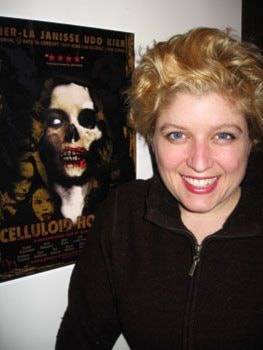In North America, it used to be considered kind of dirty to get jiggy with your belly.
Art was getting confused with sex, sullying an entire culture’s system of expression.
The reputation of an ancient art form, Middle Eastern dance, belly dancing to you and me, had been tainted in North America almost from the beginning, when it was introduced to the United States in the 1890s.
Following its debut, the dance was sold as a “hootchy-kootchy” striptease by harem girls and patrons were led to believe the movements were sexually erotic as opposed to something gracefully exotic.
That has nothing to do with the reality of Middle Eastern-style folk dance, says Nita Collins, a performer and the proprietor of Celebrations Belly Dance in Riverdale.
Belly dancing is art, and has been for a very long time.
“It’s not pole dancing, it’s really a cultural dance form,” says Collins, who was recently recognized for her contribution to belly dancing by her mentor, Toronto belly frontierswoman Yasmina Ramzy.
It was Ramzy who helped Canadians shift their attitudes on the art form, said Collins.
She pioneered Arabesque International in Toronto, a school, dance company and orchestra, which has been operating since 1987.
And it’s a school that’s asked to be affiliated with Collins’ Yukon school.
Considering what Ramzy has accomplished, that’s an honour, said Collins.
She broke the mould and got people to think of belly dancing in a way other then the sexual or burlesque image that had been in the hearts and minds of North Americans for over a century.
“When she set up her school in the ‘80s, that was the perception.
“People assumed if you were a belly dancer you worked in a night club taking off your clothes or something.”
It was a perception that was first created by American entertainment promoter, and later Congressman, Sol Bloom, the man who coined the term belly dance at the Chicago World’s Fair in the 1890s.
Before the fair Sol had tried to promote Middle Eastern dance as a cultural phenomenon. But, when there was little interest, he repackaged it as an exotic dance that was suitable for male patrons only.
He spent the night in jail for refusing to take the word “belly” off his marquee sign and just made the act that much more popular and spawned copycat acts, which varied in their artistic integrity.
Ramzy’s idea was different, says Collins.
“Her goal from the very beginning was to present the art form as an art form, which it is, along with ballet and other high art.”
And she’s done that.
Ramzy has received awards and recognition from the Canada Council of the Arts, the Ontario Arts Council, the Toronto Arts Council and the Laidlaw Foundation, an organization dedicated to expanding youth opportunities.
That’s why being recognized by Ramzy and being asked to have Yukon’s Celebration Belly Dance to be affiliated with Arabesque was such an honour, said Collins.
“She’s totally taken the dance to a new level, and to have it recognized for what it is.
“That’s one thing I’ve tried to do with my school and my dance company, to put it on the stage and present it to the public.
“It’s huge recognition. To be asked to become a member of their family this way, it’s a huge validation for me. A validation for everything I’ve worked for and believe in.”
Its recognition that will allow Celebrations Belly Dance to conduct information and student exchanges with Ramzy and show Collins’ students that the school is recognized for its quality by the best in the business.
She’ll be celebrating the honour at an open reception at the Arts Underground this evening at 7 p.m.
Collins started her dance studio in September 2001.
She was a little leery about starting a Middle Eastern dance school so soon after 9-11, but she believes in recognizing the culture for what it has offered the world, not just the negative stereotypes that the terrorist attacks of the Arab world the attacks helped perpetuate.
The school now has 50 students.
“I’ve had as many as 80. It’s like a movement, because people keep bringing their friends and bringing people in, and they keep staying.
“I have students that tell me they look forward to it all week long. They walk taller; it improves their self-esteem.
“They feel better about themselves however they are, whether they want to loose 20 pounds or they’ve always felt like they were too tall and had to hunch over.
“They feel, all of the sudden, accepting of themselves, and I think that’s a huge thing.”
And that’s what got her into belly dance in the first place.
That and her mother.
“In the 1970s belly dancing was like a huge craze, every recreation centre on the planet was offering classes.
“The whole time I was in my preteen and teenage years my mom was dancing, so I grew up in those formative years watching my mom.
“I would borrow her veil and her records and would just dance.”
So, at 16 she was enrolled in a class of her own, with her grandmother.
The way the movements make her feel have pretty much had her dancing ever since.
“When you make the movements, you just have this awareness of yourself and there’s just like this big bubble of joy that starts to come out and you can’t hold it in any more.”
